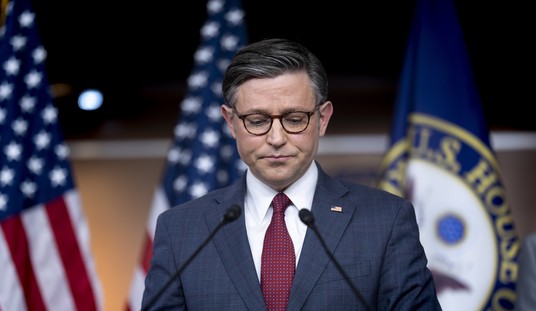The abortion debate has raged since 1973, when the Supreme Court gave abortion constitutional protection, but the basic law of the land has proved immutable. Abortion is legal, and it's going to remain legal for a long time.
Laws often alter attitudes, inducing people to accept things -- such as racial integration -- they once rejected. But sometimes, attitudes move in the opposite direction, as people see the consequences of the change. That's the case with abortion.
The news that the abortion rate has fallen to its lowest level in 30 years elicits various explanations, from increased use of contraceptives to lack of access to abortion clinics. But maybe the chief reason is that the great majority of Americans, even many who see themselves as pro-choice, are deeply uncomfortable with it.
In 1992, a Gallup/Newsweek poll found 34 percent of Americans thought abortion "should be legal under any circumstances," with 13 percent saying it should always be illegal. Last year, only 26 percent said it should always be allowed, with 18 percent saying it should never be permitted.
Sentiments are even more negative among the group that might place the highest value on being able to escape an unwanted pregnancy: young people. In 2003, Gallup found, one of every three kids from age 13 to 17 said abortion should be illegal in all circumstances. More revealing yet is that 72 percent said abortion is "morally wrong."
By now, pro-life groups know that outlawing most abortions is not a plausible aspiration. So they have adopted a two-pronged strategy. The first is to regulate it more closely -- with parental notification laws, informed consent requirements and a ban on partial-birth abortion. The second is to educate Americans with an eye toward changing "hearts and minds." In both, they have had considerable success.
Recommended
Even those who insist Americans are solidly in favor of legal abortion implicitly acknowledge the widespread distaste. That's why the Democratic Party's 2004 platform omitted any mention of the issue, and why politicians who support abortion rights cloak them in euphemisms like "the right to choose."
But some abortion rights supporters admit reservations.
It was a landmark moment in 1995 when the pro-choice author Naomi Wolf, writing in The New Republic magazine, declared that "the death of a fetus is a real death." She went on: "By refusing to look at abortion within a moral framework, we lose the millions of Americans who want to support abortion as a legal right but still need to condemn it as a moral iniquity."
The report on abortion rates from the Guttmacher Institute suggests that the evolution of attitudes has transformed behavior. Since 1990, the number of abortions has dropped from 1.61 million to 1.21 million. The abortion rate among women of childbearing age has declined by 29 percent.
Those changes could be the result of other factors, such as more use of contraception: If fewer women get pregnant, fewer will resort to abortion. But the shift is equally marked among women who do get pregnant. In 1990, 30.4 percent of pregnancies ended in abortion. Last year, the figure was 22.4 percent.
Pro-choice groups say women are having fewer abortions only because abortion clinics are growing scarcer. But abortion clinics may be growing scarcer because of a decline in demand for their services and a public opinion climate that has gotten more inhospitable.
This growing aversion to abortion may be traced to better information. When the Supreme Court legalized abortion in 1973, most people had little understanding of fetal development. But the proliferation of ultrasound images from the womb, combined with the dissemination of facts by pro-life groups, has lifted the veil.
In the comedy "Juno," a pregnant 16-year-old heads for an abortion clinic, only to change her mind after a teenage protester tells her, "Your baby probably has a beating heart, you know. It can feel pain. And it has fingernails."
"Juno" has been faulted as a "fairy tale" that sugarcoats the realities of teen pregnancy. But if it's a fairy tale, that tells something about how abortion violates our most heartfelt ideals -- and those of our adolescent children. Try to imagine a fairy tale in which the heroine has an abortion and lives happily ever after.
The prevailing view used to be: Abortion may be evil, but it's necessary. Increasingly, the sentiment is: Abortion may be necessary, but it's evil.
























Join the conversation as a VIP Member